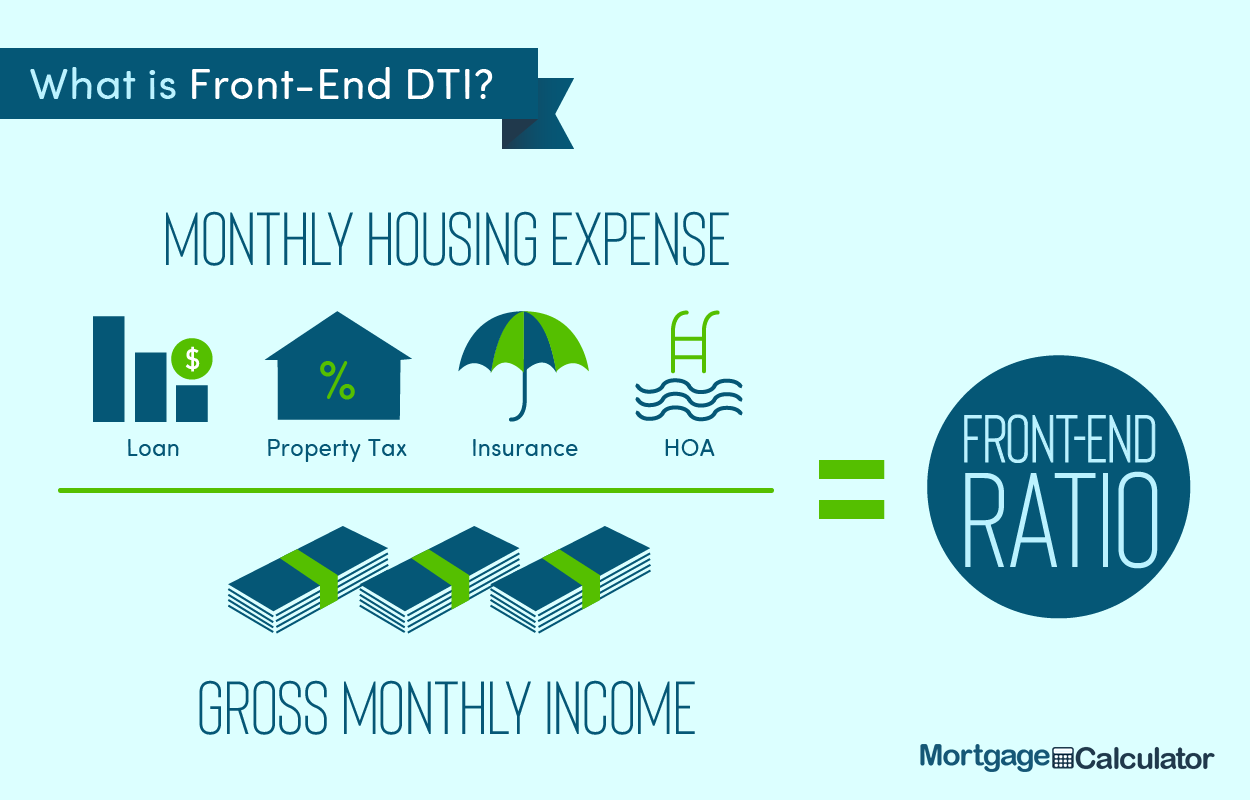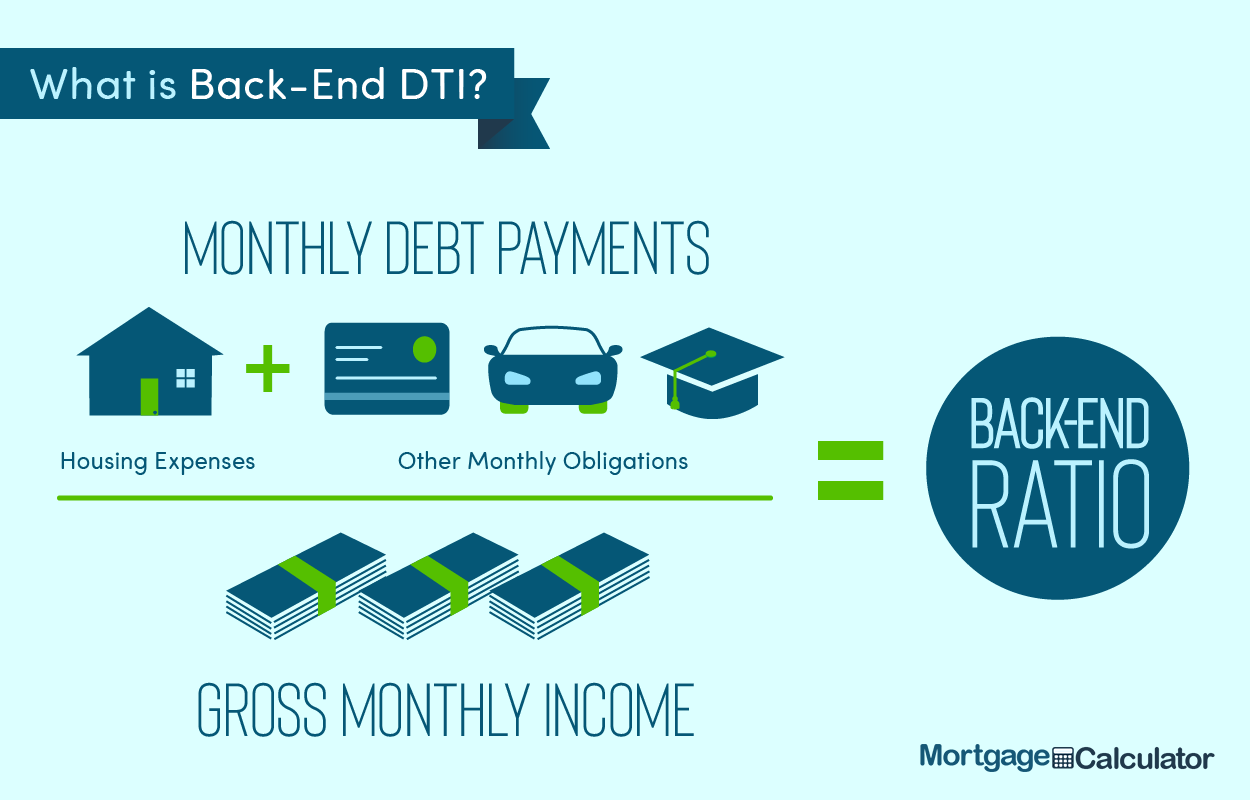
Are you wondering if you qualify for a home loan? This pre qualification calculator estimates the minimum required income for a house & will let you know how much housing you qualify for a given income level. If your home has HOA fees please include those in the annual insurance amount to adjust your calculation to account for those.

DTI Limits for Conventional, FHA, VA & USDA Loans
Federal government-backed loans from the FHA, the VA & the USDA have their own loan qualification requirements. We publish an overview table comparing various home loan options.
This calculator provides a rough estimate & lenders may charge varying rates or decide not to lend depending on variety of factors, including: down payment, house appraisal value, current market conditions, your current credit score & credit history, your outstanding debt obligations & other monthly debt payments.
For your convenience current El Monte mortgage rates are published underneath the calculator to help you make accurate calculations reflecting current market conditions.
How much money could you save? Compare lenders serving El Monte to find the best loan to fit your needs & lock in low rates today!
By default 30-yr fixed-rate loans are displayed in the table below. Filters enable you to change the loan amount, duration, or loan type.
Though you may feel that your finances are ready for a new home, the bank may not feel the same way. Mortgage lenders use a complex set of criteria to determine whether you qualify for a home loan and how much you qualify for, including your income, the price of the home, and your other debts.
The pre-qualification process can provide you with a pretty good idea of how much home lenders think you can afford given your current salary, but you can also come up with some figures on your own by learning the criteria that lenders use to evaluate you.

Your income is, of course, an important criteria in determining whether or not you can afford the mortgage you want. However, what's even more important is how much income you make in proportion to how much the home costs and in proportion to how much debt you have.
Two criteria that mortgage lenders look at to understand how much you can afford are the housing expense ratio, known as the “front-end ratio,” and the total debt-to-income ratio, known as the “back-end ratio.”
The housing expense, or front-end, ratio is determined by the amount of your gross income used to pay your monthly mortgage payment. Most lenders do not want your monthly mortgage payment to exceed 28 percent of your gross monthly income. The monthly mortgage payment includes principle, interest, property taxes, homeowner's insurance and any other fees that must be included. These costs are commonly referred to as PITI, which is derived from: pincipal, interest, tax & insurance.
FRONT END RATIO FORMULA:
FER = PITI / monthly pre-tax salary; or
FER = PITI / (annual pre-tax salary / 12)

The front-end ratio is also called the housing-expense ratio. This looks at how much you make in proportion to how much the mortgage will cost you each month, including extras like private mortgage insurance, homeowners insurance and property taxes. Typically, lenders cap the mortgage at 28 percent of your monthly income.
To determine your front-end ratio, multiply your annual income by 0.28, then divide that total by 12 for your maximum monthly mortgage payment.
Some loan programs place more emphasis on the back-end ratio than the front-end ratio. In the next section we will display a table of widely used loan programs, along with the limits associated with each.
The debt-to-income, or back-end, ratio, analyzes how much of your gross income must go toward debt payments, including your mortgage, credit cards, car loans student loans, medical expenses, child support, alimony and other obligations. Most lenders do not want your total debts, including your mortgage, to be more than 36 percent of your gross monthly income.
Determining your monthly mortgage payment based on your other debts is a bit more complicated. Multiply your annual salary by 0.36 percent, then divide the total by 12. This is the maximum amount you can pay toward debts each month. Subtract your other debts — including your car payment, your student loan payment and other debt payments — from this amount to determine the maximum amount you can spend on your monthly mortgage payment.
Once you have the two numbers and a sense of the interest rate you may qualify for, you can use a mortgage calculator to determine the cost of the home that you can afford.
BACK END RATIO FORMULA:
BER = (PITI + all other monthly debt payments) / monthly pre-tax salary; or
BER = (PITI + all other monthly debt payments) / (annual pre-tax salary / 12)

The above calculator gives you all the answers you need in one stop — determining your front- and back-end ratios and compares it to the interest rate on the loan and the length of the loan. You can also enter information about the annual taxes and insurance on the home. You'll get a clear picture of just how much home you can afford in moments, with the results e-mailed to you in a plain-English and easy-to-understand format. Just enter your e-mail and you can even have a copy of your information saved for later & available to show lenders other real estate professionals.
Here is a table of common mortgage programs, who they cater to & what their limits are. Different lenders have different criteria for their maximum front- and back-end ratios and other factors that consider to determine how much you qualify to borrow. In particular, loan programs from the U.S. Department of Agriculture, Veterans Affairs and the Federal Housing Administration have very stringent criteria, which may also include specific caps on your income, regardless or how low your debt levels are.
| Loan | Who Should Use? | Front DTI | Back DTI | Hard Cap | Down | Additional Info |
|---|---|---|---|---|---|---|
| Baseline | 28% | 36% | 20% | Historical baseline for a great home buyer who qualifies for a competitive APR. 35% of borrowers who finance put at least 20% down - about 2/3 don't. Those who don't are usually required to get PMI until LTV drops below 80%. | ||
| Conventional | Most home buyers | back-end ratio more important | 36%-43% | 45%-50% | 3% to 20% | Every lender decided based on a variety of factors. Most borrowers choose FRM over ARM loans. 30-year FRM is the most popular option. MIP is similar to PMI, though lasts onger. |
| FHA | Borrowers with poor credit scores & limited downpayment | 31% | 43% | 57% | 3.5% | Higher ratios also require compensating factors for loan approval. Credit score above 580 ok, credit score from 500-579 require 10% downpayment. |
| VA | Active duty military members & veterans | back-end ratio more important | 41% | ~ 47% | 0% | Each veteran is considered based on a variety of factors. Approvals above 41% require an explanation. Both BAH and BAS are counted as income to help borrwers qualify. Loans have a relatively small funding fee. |
| USDA | Low-income rural | 29% | 41% | 41% | 0% | Maximum allowable income is 115% of local median income. Most of the land mass of the nation outside of large cities qualify for USDA. Top backend limit rises to 44% with PITI below 32%. A small funding fee of about 1% is added to the loan. |
Both Fannie Mae and Freddie Mac have allowed higher DTI ratios for buyers carrying significant student debt.
While measuring debt-to-income is useful for getting a baseline feel for what you may qualify for, the CFPB proposed shifting mortgage qualification away from DTI to using a pricing based approach.

What Change did the CFPB Propose?
"the Bureau proposes to amend the General QM definition in Regulation Z to replace the DTI limit with a price-based approach."
Why Did They Suggest the Change?
"The Bureau is proposing a price-based approach because it preliminarily concludes that a loan’s price, as measured by comparing a loan’s annual percentage rate to the average prime offer rate for a comparable transaction, is a strong indicator and more holistic and flexible measure of a consumer’s ability to repay than DTI alone."
How Does This Impact Loan Qualification for Low-income Buyers?
"For eligibility for QM status under the General QM definition, the Bureau is proposing a price threshold for most loans as well as higher price thresholds for smaller loans, which is particularly important for manufactured housing and for minority consumers."
Though you will need to meet with a mortgage lender to get a precise understanding of how your financial circumstances affect how much money you can afford to borrow, using the above income qualification calculator can help you get an understanding of what you are likely to be able to afford before you ever start the process of looking for a home or getting pre-qualified for a mortgage.
Just enter the property value, down payment you plan to make, interest rate you are likely to qualify for, length of the loan you desire, your estimated front and back ratio (using our affordability calculator found here) and your estimated annual taxes, insurance and private mortgage insurance. The calculator includes standard amounts for each item in case you aren't sure what to enter. Your results will be e-mailed to you within moments, and you will have a clear understanding of what you can expect when you go meet with a mortgage lender.
Explore conventional mortgages, FHA loans, USDA loans, and VA loans to find out which option is right for you.
Check your options with a trusted El Monte lender.
Answer a few questions below and connect with a lender who can help you save today!